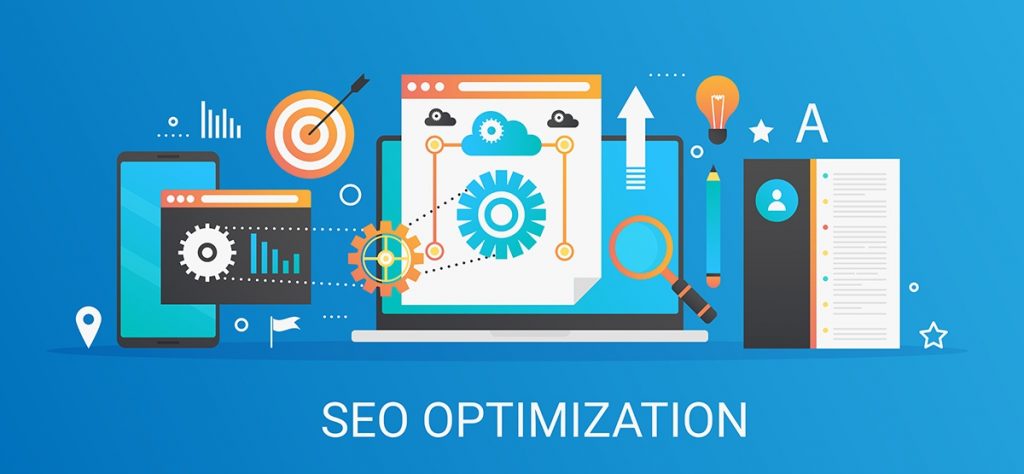Table of Contents
When it comes to creating an E-Commerce website, one of the questions that online business owners often encounter is which platform should they choose? Between Magento and Shopify? Of course, these two platforms are very different in terms of both their strengths and features. Therefore, users should consider their business needs, features, and budget in order to be able to choose the platform that suits their business and can be used most cost-effectively.
In this article, we will compare the capabilities of Magento and Shopify, how they differ, and what are the pros and cons of each platform to help you decide which e-commerce platform is best for your needs.
Basic Differences Between Magento Vs Shopify In General
1. Customizability
Magento is a very flexible platform, allowing you to customize everything to suit your business needs. However, this flexibility comes at the cost of complexity, requiring a developer or technical support person to maintain the system. So if your business is complex or has specific needs, Magento may be the best choice.
On the other hand, Shopify is an easy-to-use platform and is suitable for beginners to create online stores and new entrepreneurs because this platform is easy to use and has a complete set of features. The setup is not complicated and does not require a lot of customization. Therefore, even if you are not an expert in coding, you can learn how to use it easily. However, Shopify’s flexibility may not be comparable to Magento, but it is enough for medium or small businesses that want to get started quickly.
2. Support for users and business growth
If you are looking for a platform that can support your business growth, Magento is a great choice, as it is structured to support unlimited business expansion. However, Shopify , despite its ease of use, is too limited in terms of customization, which may require some study to customize it to suit your business model. If your business grows, you may need to consider the Shopify Plus plan, which has more sophisticated management features. Upgrading to Shopify Plus is more expensive, but it is worth the investment for future business growth.
3. Cost of system development and maintenance
For entrepreneurs on a budget, Shopify Implementation Service is a worthwhile option. Shopify offers pre-built packages and themes, and its website development costs are much lower than Magento, meaning you don’t need to hire a full-time developer or spend a lot of time on maintenance, making it easier and faster to start an online business.
But if you have specific needs for website development, such as a fully customizable system or complex integrations with other systems, Magento is a better choice. Although it costs more to develop and maintain, in the long run, its customizability and growth capabilities will help your business go further.
How Magento 2 Grows
By studying the basics of each platform, let’s see what are the key variables that make them successful online stores.
Ability to support scalability
In this respect, Magento tends to do better than Shopify for building larger stores that manage multiple products. If you want to start a small, no-frills store, Shopify might be a good choice for you. However, if you want an online business that has the potential to grow rapidly and has the flexibility to evolve, Magento is a much better choice.
And the real question is, who wouldn’t want to invest in something that can keep growing?
Capability
Magento is a powerful tool for business owners, with over 5,000 add-ons (free and paid) it definitely has an edge when it comes to capabilities, and when compared to Shopify’s 100+ apps and add-ons.
Any idea you have while creating your online store can be easily implemented with a Magento extension. For example, if you want to add custom coupon error messages or login multiple employees with different permissions, it’s easy to do with an extension, and the possibilities are limitless, even if you’re not a coder.
With Magento, every part of the website is under the control of the business owner.
This is something that many business owners may focus on, depending on their goals. Administrators can create and manage multiple stores within the same admin panel.
In addition, compared to Shopify, Magento itself has more front-end features for customers, such as adding coupon codes, gift cards, customer dashboard, related products, favorites, order status pages, and many more.
Branding and Design
Creating a successful online store is very much about creating a unique brand that customers will recognize and respect, and a key part of branding is design.
Both Magento and Shopify have a large number of free and premium themes available, and for both platforms, these themes need to be responsive on a variety of screen sizes, as having a mobile-friendly online store is also very important, as many customers use their mobile phones to shop online.
And because Shopify themes are proprietary, they don’t allow for much customization beyond changing colors and fonts, leaving Shopify users with less flexibility to customize their themes, creating potential issues with store branding.
The Magento 2 upgrade includes drag-and-drop screenshot editing tools that will help non-coders and coders create beautiful websites in no time.
User Experience
Many say that Shopify is easier to use than Magento, making it more desirable for non-developers, and that it’s faster to create a store right out of the box after signing up. Shopify also offers a website builder that lets you customize store features within the platform.
Magento also has ready-to-use extensions, but they are very easy to use without coding. If you need to use them for simple tasks, they are already prepared.
For users who want a better user experience than the previous Magento 1 and Add-ons, the new Magento 2 release also fixes many issues that Magento 1 users had.
Because in Magento 2, it comes with a much easier-to-use user control panel, and it becomes easier for new users who need time to learn. Compared to Shopify, admins will be able to perform various tasks more easily, such as being able to access advanced reporting, managing payment processors, sorting customers, marketing products, etc. Administrators can easily manage stores behind the scenes and do not require advanced development skills.
Administrators can achieve more in a shorter period of time, which is great for new businesses that struggle to easily manage long lists. They can also optimize their e-commerce stores for different screen sizes.
SEO
With over 44% of online purchases beginning with an online search, finding your store and your products on Google and other search engines is incredibly important.
Some ecommerce platforms are simply better when it comes to search engine optimization (SEO). In a study that measured the SEO of 16 shopping cart platforms, Magento came out on top, followed closely by Shopify and WooCommerce.
SEO features that are checked include things like the use of headings, description placement, page URLs and titles, etc. And with equal SEO scores, you can be sure that Shopify and Magento’s SEO capabilities will help drive organic traffic to your online store.
speed
Site speed remains the number one factor for SEO and determines whether or not customers will purchase from your store. If it takes a while for your store pages and products to load, your potential customers may move on to another website instead, and research shows that even a 1-second delay can reduce conversions by up to 7%.
So the faster your online store is, the more successful it will be. In the past, many users reported that Magento was incredibly slow to load, and this is where Shopify comes in as the clear winner in terms of speed.
But with the launch of Magento 2, it’s not clear which platform is more efficient. Compared to Magento 1 sites, Magento 2 sites are up to 20% faster, and in some cases, up to 56% faster!
Payment
Fast and easy checkout is another factor to consider when comparing Shopify and Magento, and for Magento 2, the ordering experience has been improved and improved.
The new improvements include a number of features, such as a frictionless checkout, automated checkout, one-click account creation, and a two-step checkout that places a discount code field right at the checkout page, making it much easier for customers to use the site, as well as separate shipping and payment information to reduce confusion.
Shopify also has a great checkout with a responsive one-page checkout intro. The irony is that in Shopify, business owners with lower-tier pricing plans don’t have real-time shipping rates, which can result in higher shipping rates for customers.
community
Another “professional” aspect of Magento is its wealth of community. Compared to Shopify, Magento has a much larger community, and these Magento developers can create a variety of solutions for a large number of users. There are also resources for beginners who want to learn more about Magento.
With the vastness of the Magento community, business owners have little trouble finding capable and working developers, and users can easily reach out to Magento for help or access support and maintenance through these external developers.
Making a Marketplace
Many ecommerce platform users may want to create a marketplace where multiple sellers can offer their products through a single shopping cart. Both Shopify and Magento 2 have add-ons to enable multi-vendor integrations. Once again, Magento is ahead of Shopify in terms of marketplace store creation. Magento also has built-in promotional features, such as price-tag promotions and flexible-time coupons, which can help single-store and multi-store retailers achieve new levels of success.
Magento 2’s upgrades bring the scalability and performance needed for successful multi-vendor and marketplace stores to thrive, and Magento has the power to keep you ahead of the competition.
Conclusion
It’s hard to say which ecommerce platform is best for every store, as what’s best often depends on your goals, budget, and expertise. When deciding between Shopify and Magento, you should consider what’s most important to you.
If you are building a quick store that can handle 100 products, Shopify may be the best fit for your needs. But if you are looking to develop an online store with unlimited potential, with the ability to expand and customize, Magento is definitely better. Again, it depends on each situation. If you are interested in Magento Service to help develop your store, you can search for information on the Internet or contact Cipher Co., Ltd. for consultation and development.
Magento is packed with incredibly useful built-in features and unlimited possibilities through add-ons and extensions. For these reasons, along with the improvements that Magento 2 brings, it deserves to be the best choice for online store businesses.





